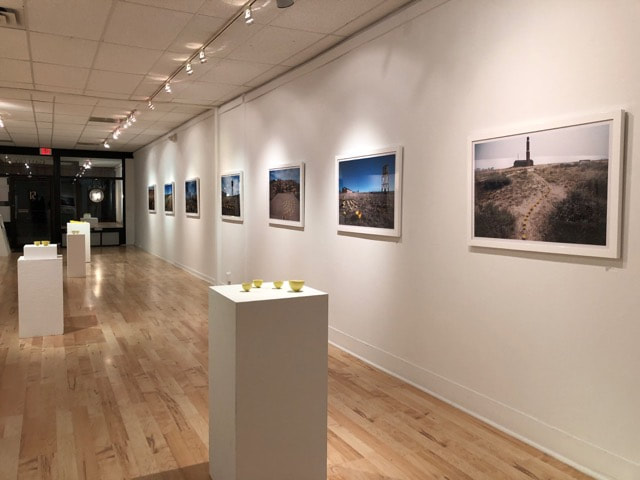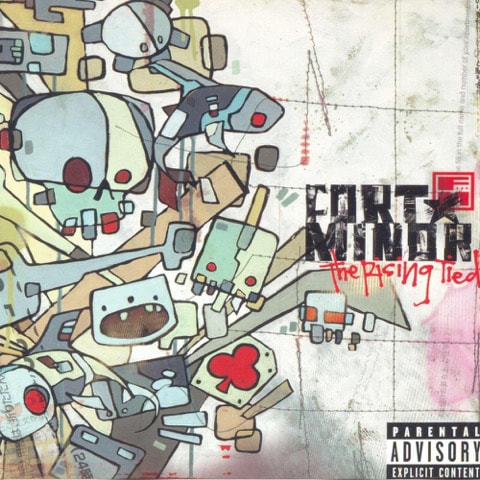|
Ever since February 19th and the 75th Anniversary of FDR’s signing of EO 9066, a host of unexpectedly fortunate things have happened to my tea bowls and the images that tell their story, including being featured at the FDR Library and Museum in Hyde Park earlier this year (until the end of December) and being selected for a juried sculpture show at The Mount in Lenox, MA, this summer. As that chapter closes, another one has begun. This fall has been particularly extraordinary because of a collaboration with Massachusetts College of Liberal Arts (aka MCLA) in North Adams, MA. In early spring, the head of MCLA’s Berkshire Cultural Resource Center, Michelle Daly, contacted me to say that she and members of the faculty were interested in bringing the Freedom From Fear/Yellow Bowl Project to campus. The first phase was to bring the project to MCLA’s Gallery 51 (located a block away from MassMOCA), for a show that opened at the end of September and where it will be on exhibit until the 19th of November, 2017. This was followed by two extraordinary days on campus in October, where I was given the opportunity to talk to different classes about the FfF/YBP in the context of various disciplines and perspectives: what happens to civil liberties during war for a “US Government and Public Policy” class; the challenges of getting one's message out for an “Arts Management” class; the role of community engagement and the power of art for a “Culture, Power and Protest” class; the importance of historical context and empathy for a “War, Science and Society” class; how experience in journalism shaped my project for a “Writing for Arts and Culture” class; and, last but not least, talking about the Asian-American experience in a “Conversations on Race” class. Even though I came to teach, I learned a lot from the questions and the exchanges that ensued. One in particular I’d like to share: After one of the history classes, a student came up to me to say there is a song she couldn’t stop listening to and asked me if I had ever heard of it…it was called “Kenji” by the group Fort Minor. She could tell no light bulb was going off as she looked at my blank expression. She prompted me some more…the lead singer is one of the founders of the group Linkin Park? Now a small glow of recognition appeared on my face. I had heard of Linkin Park, but I have to admit I knew nothing about them other than the fact that they were a rock band. I now know (from Wikipedia) that they have been called the best-selling band of the 21st century, one of the world’s best-selling music artists overall and a two-time Grammy winner with an international fan base. What I didn’t know that I learned from the student was that one of the founders of the band and lead vocalists is a Japanese-American guy named Mike Shinoda. Fort Minor is one of his side projects, for which he wrote a song called “Kenji”, which is about his family’s experience of being forcibly sent to one of the US concentration camps during WWII. He uses real out-takes from interviews with his father and his aunt which give an unexpected documentary feel to what is a rap song. Who knew?! Here is a link to the song. Finally, in November, I got to see some of the results of an assignment that Dale Fink, a professor of education at MCLA and an expert on children’s literature, gave his students. He called it “An Image of my Own Resilience.”
The challenge, inspired by the FfF/YBP, was to create a conceptual work of art in order to tell the story of resilience in the face of a personal setback, hardship, difficult situation or challenge the student had to get through at some point in his or her childhood or adolescence (or even recently). He instructed the students to find or create an object or memento that said something about themselves, identify a place that would bring out the meaning of the difficulty, pose the object and document it with a photograph. He told them to submit one to three photos and a caption that was as short as 25 words or as long as two paragraphs. An alternative was to focus on the challenges faced by an entire group of people (by ethnicity, language, gender, sexuality, religion, etc.) rather than on a personal history. I was surprised at the unexpected power of the students' work. The pain in some and the ultimate acceptance and ensuing catharsis in others was palpable. I found the experience not unlike appreciating a good haiku. The structure is simple and straightforward, but the impact of the truth it revealed lingered long past the experience of seeing the images . I am hoping to share some with you, but I will refrain until I get these artists’ permission. Perhaps in the near future…
1 Comment
10/17/2023 07:59:33 am
Small bowls on campus are a fantastic addition! They not only offer a convenient and eco-friendly way to enjoy meals but also promote portion control, which is essential for maintaining a balanced diet. It's a small change that can have a big impact on our health and the environment. Kudos to the campus for taking this step towards sustainability and healthier eating habits!
Reply
Leave a Reply. |
Setsuko WinchesterMy Yellow Bowl Project hopes to spur discussion around these questions: Who is an American? What does citizenship mean? How long do you have to be in the US to be considered a bonafide member of this group? Archives
June 2021
Categories |



 RSS Feed
RSS Feed